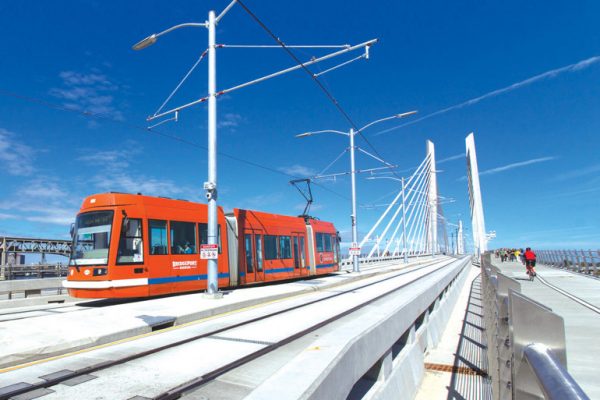
From a distance, it’s beautiful — white spears with delicate white strands holding up an arched roadway across the Willamette River. It’s only when you get closer that it hits you: no cars. There are buses, trains, cyclists and walkers, but no cars and no trucks. This is a big new bridge across a major river in a major American city, and cars were left off the invitation list. It’s probably the first of its kind in a century.
The Tilikum Crossing in Portland, Ore., is in a city and state that have been at the forefront of ambitious planning efforts for decades. Since at least 1973, when the state’s landmark growth boundary law was passed, Portland has made itself a denser, more urban city within a state that strongly prioritizes protecting both the environment and agriculture.
The bridge, which opened in 2015 (and whose name means “people” in the local Chinook language), fits into this agenda. Will other cities copy Portland? Will it work on its own terms? Before we can answer that, we need to understand better why Portland built it.
By Alex Marshall – Full Story at Governing.com


